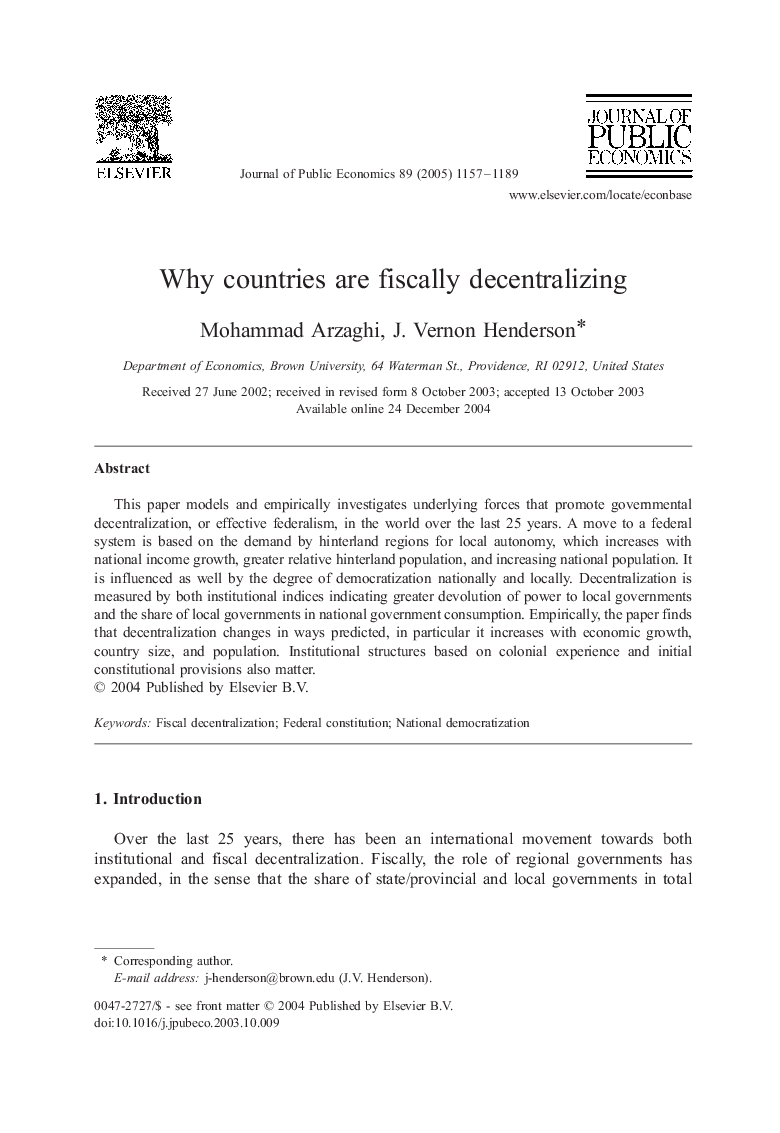| Article ID | Journal | Published Year | Pages | File Type |
|---|---|---|---|---|
| 10479573 | Journal of Public Economics | 2005 | 33 Pages |
Abstract
This paper models and empirically investigates underlying forces that promote governmental decentralization, or effective federalism, in the world over the last 25 years. A move to a federal system is based on the demand by hinterland regions for local autonomy, which increases with national income growth, greater relative hinterland population, and increasing national population. It is influenced as well by the degree of democratization nationally and locally. Decentralization is measured by both institutional indices indicating greater devolution of power to local governments and the share of local governments in national government consumption. Empirically, the paper finds that decentralization changes in ways predicted, in particular it increases with economic growth, country size, and population. Institutional structures based on colonial experience and initial constitutional provisions also matter.
Keywords
Related Topics
Social Sciences and Humanities
Economics, Econometrics and Finance
Economics and Econometrics
Authors
Mohammad Arzaghi, J. Vernon Henderson,
